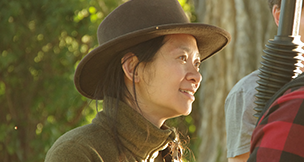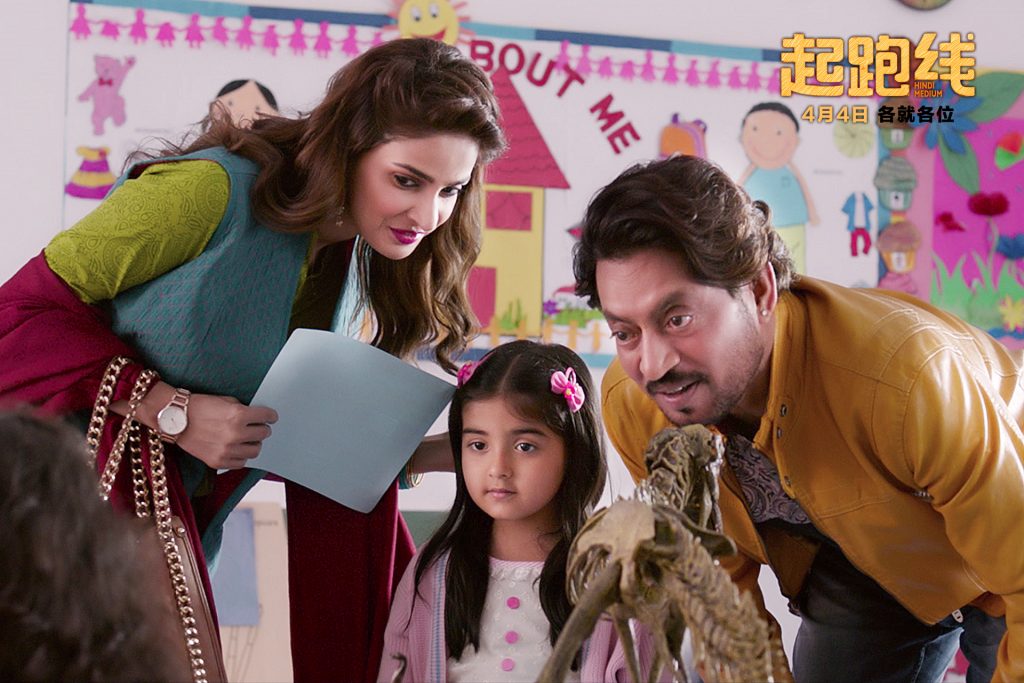“The Rider” centers on Brady (Brady Jandreau), a Native American bronco rider whose fall from his horse dramatically alters his life. The Sony Pictures Classics release, opening April 13, is written and directed by Chinese filmmaker Chloé Zhao, whose journey across America led her to the Lakota Reservation in South Dakota.
“I arrived from Beijing and the U.K. a sheltered woman who did not speak English very well,” she confides, after a New York Film Festival screening last fall. “I dreamed of studying in America.” Zhao’s freshman year at Mount Holyoke College in Massachusetts began a few days before 9/11. “I was ignorant of America when that happened,” she recalls. “Everything I knew about this country came from Hollywood movies.”
In her elegiac second feature, Zhao portrays an America few Americans know. Indian reservations, even the dozen or so that welcome visitors, or that share grazing lands and a border with U.S. national parks, such as Grand Canyon and Badlands, are rarely visited by vacationers. Badlands is on the Pine Ridge Reservation, where The Rider is set and where it was filmed. In the 1970s, it was the home of Oglala Lakota Russell Means, a founder of the American Indian Movement. One of AIM’s most famous protests was an occupation of Mount Rushmore in 1971, a monument built on land sacred to the Lakota. The Wounded Knee Massacre of Lakota in 1890 took place on what is now the Pine Ridge Reservation. The Lakota were among the organizers of recent protests at Standing Rock; the oil pipeline that was the object of those protests may endanger the reservation’s water supply.
Chris Eyre’s Skins (2002), a story of a former Native American football player and his brother, was the first theatrical film shot on Pine Ridge, the most impoverished area of the United States. Zhao has produced both of her films there. The first, Songs My Brother Taught Me (2015), is about a young man, not unlike many other Native American men and women, whose prospects for a better life lie off the reservation and away from their loved ones. In contrast, The Rider profiles a cowboy, a man immersed in the mainstream ranching lifestyle of Native American reservations in the West and Southwest.
“It is not as simple as saying Brady, as a cowboy, is a person of the land,” Zhao says, pointing to the complex nature of Native American identity. “We separated them from their land and put them in boarding schools. A couple of generations later, they’re on Snapchat, and some young people don’t know how to manage their land.”
Zhao’s undergraduate degree is in political science, but she switched to film as a graduate student living in New York City. “I was in my third year in the film program, and I knew that my time in New York wasn’t going to work out,” she says. “It was expensive, and I was lost as a human being and a storyteller, so I went west.” By the time she began production on her first film, which she also wrote and directed, Zhao had moved to Denver, and was traveling back and forth between that city and the Pine Ridge Reservation.
“Being someone who looks like me made it easy to be on the reservation,” she explains, “although my cinematographer, who is a tall, British guy, did not have it as easy as I did.” Joshua James Richards (last year’s acclaimed God’s Own Country) was Zhao’s director of photography on both of her films. “I can walk into someone’s home,” she adds. Lakota and Diné and other Native Americans welcome Asians and Asian-Americans as their Eurasian ancestors.
The Rider features an all-Lakota cast playing themselves. Lane Scott, Brady’s hospitalized friend, was a local rodeo performer before he was severely injured in a car accident. Brady’s other co-stars, his father Tim, and his autistic sister Lily, are his real-life family.
Zhao recalls that she was playing videogames when she first met Brady. “I thought: The camera is going to love that face,” she says. “I went outside and watched as he trained a horse. That evening, I asked him if he wanted to make a film with me.”
Brady trains horses for a living, and was a rodeo bronco rider before his accident. It is a sport many Native American boys and men (and some women) aspire to. Bronco contestants ride a specially trained horse that bucks in an attempt to throw the rider, as Zhao illustrates in the film. Rodeos are the main sporting event on some reservations; while they include competitions in roping and herding, bronco riding is the epitome of masculine bravado. “I didn’t have a story for almost a year and a half,” Zhao says, “and then Brady got hurt and I had my story.”
The Rider begins with Brady picking stitches out of his head, where he now has a metal plate. The film charts his recovery, and his far more painful realization that his rodeo days are behind him. “I was drawn to Brady because there is something so pure and authentic about who he is at a time when everyone is conforming to trends and young people want to be someone else,” Zhao notes. “He is so unapologetically himself. I thought the camera would capture that.”
Brady’s difficult relationship with his father is not invented, nor is his tender and candid way of being with Lily. As for the cowboy’s horse-training skills, Zhao staged some shots, but when Brady is in a corral calming a bucking horse, that is real—the horse is wild. The scene, which showcases Richards’ handheld camera work, is also a particularly remarkable example of the delicate verisimilitude that distinguishes Zhao’s film.
Zhao started with a 55-page script based on her actors’ lives. She remembers her first meeting with Lily: “She had taped scenes from TV shows, edited them in-camera, and acted to that. Lily has been expressing herself through storytelling all of her life.” Reflecting on Lily’s autism, Zhao says that it was very important to her “to be able to cast someone who has disabilities but not making the film about that.”
The Rider is shot almost entirely in natural light. “What lights we had, we bought at Walmart,” Zhao says. “It is hard to make a film beautiful and real, because it has to go beyond beautiful to make it real. I give that to Josh Richards. He’s that good.” As for the splendor of the landscape, the night sky and the horses, they needed no embellishment. “What Brady is seeing,” Zhao says, “is something already so majestic.”
-This article originally appeared on Film Journal.









